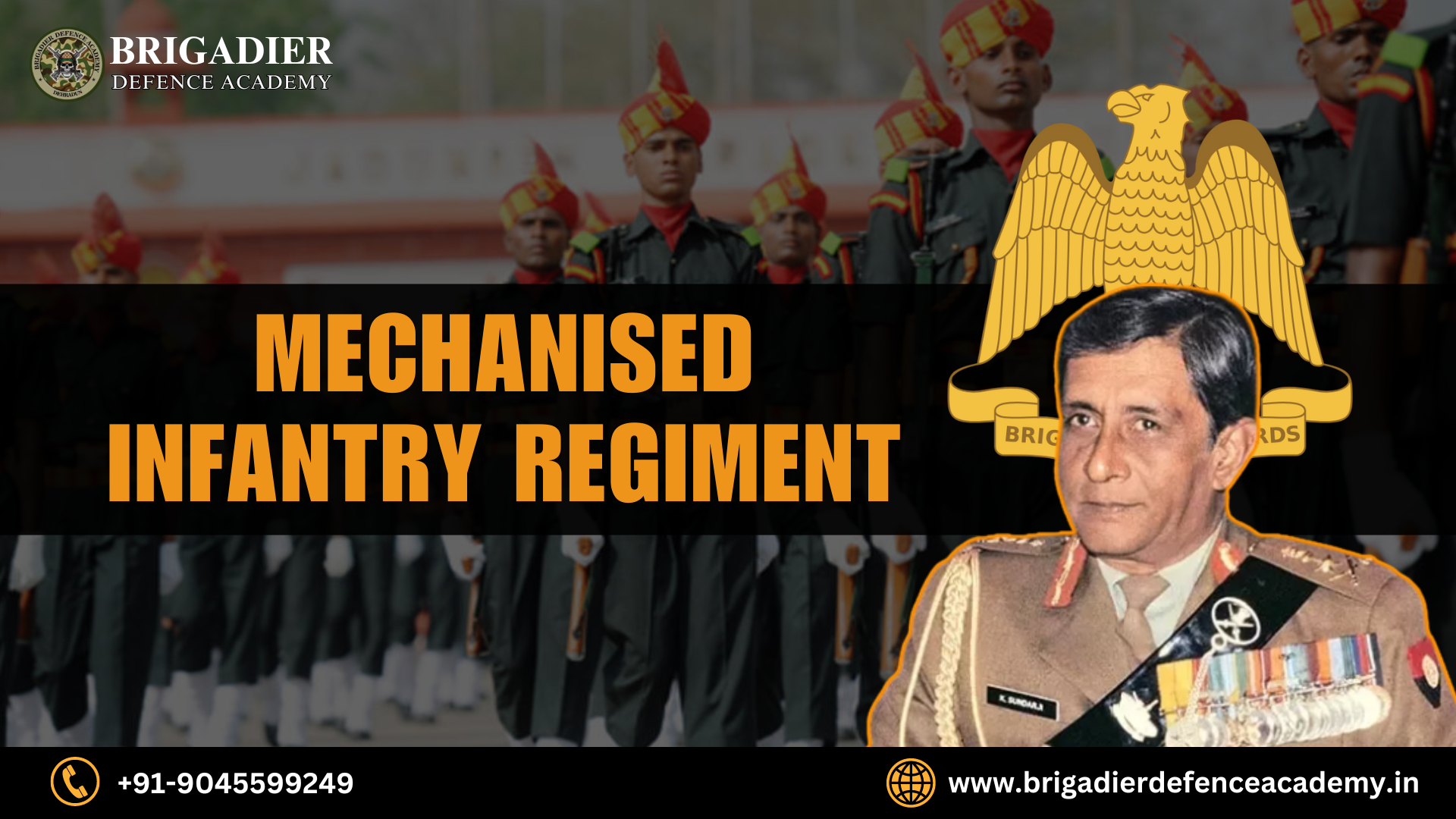The Mechanised Infantry Regiment of India: A Pillar of Modern Warfare
The Mechanised Infantry Regiment (MIR) of the Indian Army stands as a testament to the country’s commitment to modernizing its military forces. Established to enhance the operational capabilities of the Indian Army, the regiment integrates the mobility and firepower of mechanized vehicles with the versatility and resilience of infantry troops. This combination creates a formidable force capable of rapid deployment and sustained operations in various terrains and combat scenarios.
Historical Background of Mechanised Infantry Regiment
The origins of mechanized infantry in India can be traced back to the post-Independence era when the Indian Army recognized the need to evolve from traditional infantry and cavalry units. The transformation gained momentum after the 1965 and 1971 wars with Pakistan, which underscored the importance of mobility and mechanization in modern warfare. Consequently, the Mechanised Infantry Regiment was officially raised on April 2, 1979, under the visionary leadership of Lieutenant General A.S. Kalkat.
Structure and Organization
The Mechanised Infantry Regiment is organized into battalions, each equipped with Infantry Combat Vehicles (ICVs) like the BMP-2 Sarath. These vehicles provide the necessary firepower, protection, and mobility, enabling troops to engage in combat while being shielded from enemy fire. The regiment’s structure ensures flexibility and rapid response, with battalions capable of operating independently or as part of larger formations in joint operations with armored and artillery units.
Roles and Responsibilities
The primary role of the Mechanised Infantry Regiment is to provide rapid and flexible support to armored divisions. This involves offensive operations, defensive tasks, and reconnaissance missions. The regiment’s ability to move quickly across diverse terrains—ranging from deserts to mountains—makes it a critical asset in both conventional and counter-insurgency operations.
Offensive Operations: In offensive operations, mechanized infantry units spearhead assaults, penetrating enemy defenses and securing key objectives. Their mobility allows them to exploit breaches and maintain momentum, preventing the enemy from regrouping.
Defensive Tasks: In defensive scenarios, mechanized infantry units hold strategic positions, utilizing their firepower and fortified positions to repel enemy attacks. The ICVs provide a mobile shield, enabling troops to maneuver and counterattack effectively.
Reconnaissance Missions: The regiment also undertakes reconnaissance missions, gathering vital intelligence on enemy positions and movements. This information is crucial for planning and executing larger operational strategies.
Training and Modernization
Training for the Mechanised Infantry Regiment is rigorous and comprehensive, encompassing a wide range of skills from basic infantry tactics to advanced mechanized warfare. Soldiers undergo specialized training to operate and maintain ICVs, ensuring they can effectively utilize the vehicles’ capabilities in combat. Additionally, joint exercises with other branches of the military, such as the Armoured Corps and the Artillery, enhance interoperability and coordination.
Modernization is a continuous process, with the Indian Army investing in new technologies and equipment to keep the regiment at the forefront of military capabilities. Upgrades to ICVs, including advanced communication systems, enhanced armor, and improved weaponry, ensure the regiment can meet the evolving challenges of modern warfare. The introduction of the Future Infantry Combat Vehicle (FICV) project aims to further enhance the regiment’s operational effectiveness.
Notable Engagements
The Mechanised Infantry Regiment has participated in several significant military engagements, demonstrating its prowess and versatility. During the Kargil War in 1999, mechanized infantry units played a crucial role in reclaiming strategic heights from entrenched enemy positions. Their ability to navigate difficult terrain and provide sustained fire support was instrumental in the success of the operations.
The regiment has also been actively involved in various United Nations peacekeeping missions, contributing to global peace and security. Deployments in conflict zones such as Lebanon, Congo, and Sudan highlight the regiment’s capability to operate in diverse and challenging environments, upholding India’s commitment to international peacekeeping efforts.
The Human Element
The success of the Mechanised Infantry Regiment is not solely attributed to its advanced equipment and technology. The human element—the soldiers themselves—are the core strength of the regiment. The bravery, resilience, and professionalism of the men and women who serve in the regiment are unparalleled. Their dedication to duty and unwavering commitment to the nation embody the spirit of the Indian Army.
Soldiers in the Mechanised Infantry Regiment undergo rigorous physical and mental training, preparing them for the harsh realities of combat. The regiment fosters a sense of camaraderie and esprit de corps, with soldiers building strong bonds of trust and loyalty. This unity is a crucial factor in the regiment’s effectiveness, ensuring that soldiers can rely on each other in the heat of battle.
Future Prospects
As the nature of warfare continues to evolve, the Mechanised Infantry Regiment must adapt to new challenges and threats. The increasing importance of cyber warfare, drone technology, and network-centric operations requires the regiment to integrate these elements into its operational framework. The Indian Army’s focus on modernization and technological advancement will play a crucial role in maintaining the regiment’s edge.
Furthermore, the regiment’s role in joint operations and integrated battle groups will become more prominent. Collaboration with other branches of the military, as well as with international allies, will enhance the regiment’s capabilities and ensure it remains a vital component of India’s defense strategy.The Mechanised Infantry Regiment of India stands as a symbol of the Indian Army’s strength and adaptability. Its unique combination of mobility, firepower, and versatility makes it a formidable force in modern warfare. Through continuous training, modernization, and the unwavering dedication of its soldiers, the regiment continues to uphold its legacy of excellence. As India navigates the complexities of the 21st-century security landscape, the Mechanised Infantry Regiment will undoubtedly play a pivotal role in safeguarding the nation’s sovereignty and contributing to global peace and stability.







